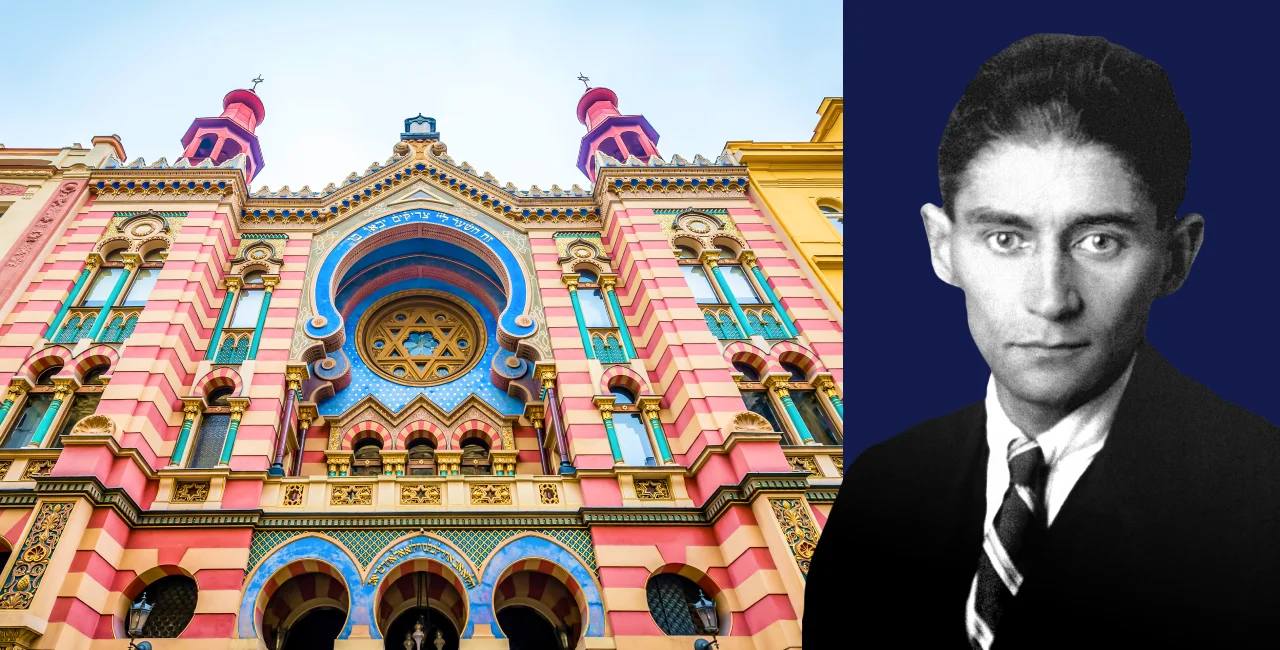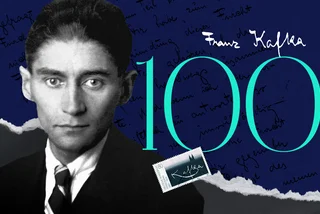A new exhibition at the Jerusalem Synagogue in Prague aims to showcase how famed author Franz Kafka’s work inspires and influences contemporary artists a century after his death.
Titled Visions of Kafka’s Shadow, the exhibit features photographs and paintings by 11 artists accompanied by excerpts from Kafka’s literary works. It will be displayed in the synagogue from Monday, June 3, the 100th anniversary of the Prague writer’s death, until the end of the year.
“We wanted to go more along the path of reflecting the work of Franz Kafka in contemporary art because most of the authors represented here at the exhibition are contemporary,” Pavel Veselý, co-author of the exhibition, told ČTK. “It reflects what Kafka brings to contemporary artists, even 100 years after his death, and what he inspires. Or vice versa, when we can look for Kafka in his works because he is quite broad and his work can be interpreted in different ways.”
Prague's largest synagogue, a Moorish-Art Nouveau wonder
Prague’s newest and largest synagogue, the Jerusalem Synagogue, is renowned for combining Art Nouveau elements with pseudo-Moorish style. Designed by Vienna architect Wilhelm Stiassny and built by Alois Richter, the synagogue was completed in 1906, and ownership was transferred to Prague's Jewish community in 1907. The richly painted ornaments in the Vienna Art Nouveau style were discovered in the synagogue during reconstruction in the 1990s.
The exhibition is displayed in the central nave of the synagogue. The panels along the sides feature photographs, paintings, and excerpts from Kafka’s work. Exhibited artists include painters Ivan Bukovský, Adolf Hoffmeister, Xénia Hoffmeisterová, and Vladimír Suchánek, as well as photographers Jindřich Buxbaum, Jan Jindra, Alžběta Jungrová, Jiří Kovanice and Matěj Stránský. Curator Karel Cudlín is also exhibiting his “Kafka” work.
In his novels and short stories, Kafka takes us into a world of darkness, anxiety, and absurdity. His work is full of mystery, misunderstanding, and metaphors that make us question our reality. This exhibition aims to capture and interpret the essence of Kafka’s world through visual language,” said the exhibition’s creators.
The exhibition can be viewed at the Jerusalem Synagogue daily, except Saturdays and Jewish holidays, from 10 a.m. to 6 p.m. from June to September and from 10 a.m. to 5 p.m. from October to the end of the year.
This year marks the 100th anniversary of Kafka’s death on June 3, 1924. The Prague-born writer, who wrote in German, is considered one of the most influential literary figures of the 20th century. Events commemorating his life and work include theater, opera, and ballet performances, as well as a mobile game to introduce Kafka’s work to younger audiences. Another major exhibition, Kafkaesque, runs at DOX Centre for Contemporary Art until Sept. 2024.












 Reading time: 2 minutes
Reading time: 2 minutes 


























